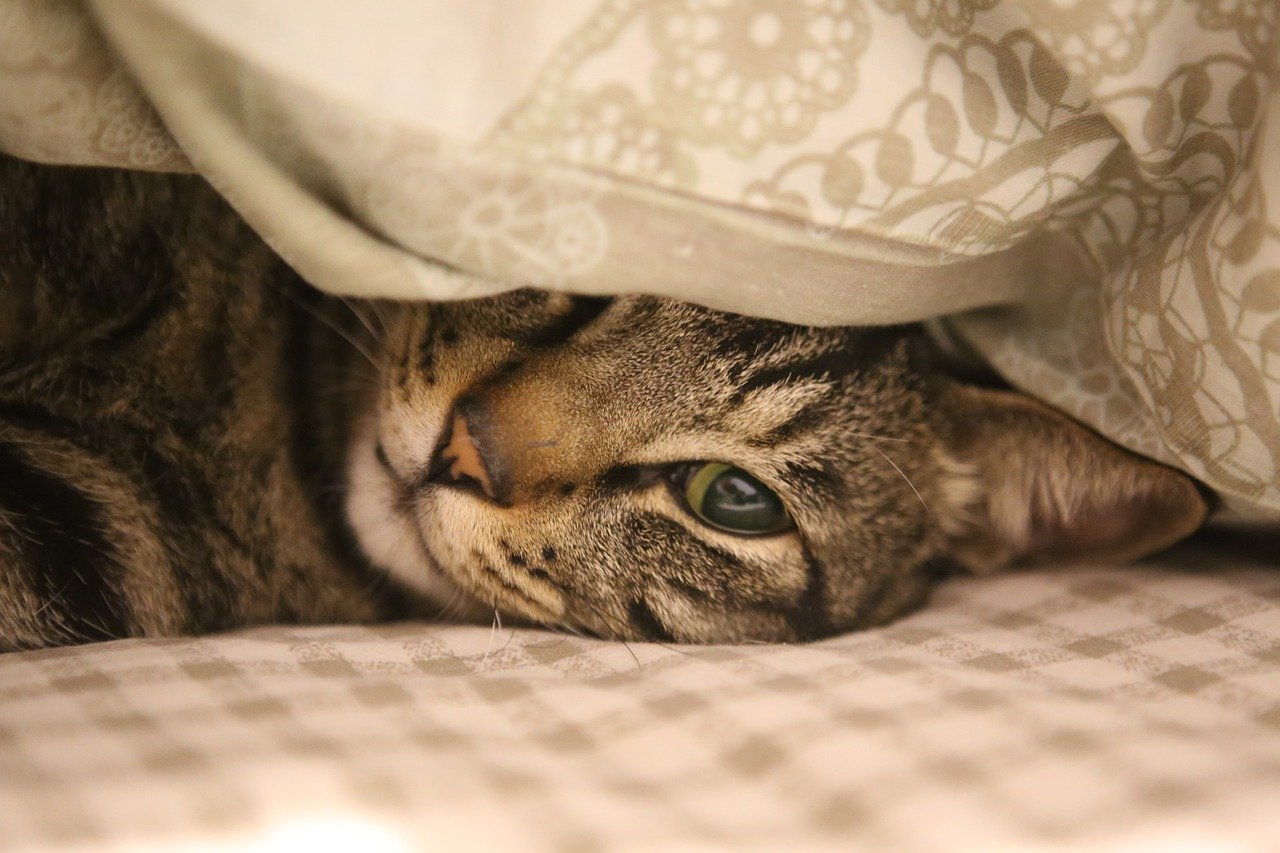
You’ve probably experienced it: one minute your cat is frolicking around the living room, and the next, they’ve vanished into thin air. This sudden disappearance often triggers a range of emotions, from concern to frustration. Why does your cat prefer to slip away and seek refuge in the most unlikely places? The answer is more complex than you might think. Let’s embark on a journey to uncover the surprising reasons behind your cat’s hiding habits and how to address them effectively.
Cats and Their Natural Instincts
The Instinct to Hide: A Survival Mechanism
1. The Legacy of Wild Ancestry
- Natural Camouflage: In the wild, hiding serves as a crucial survival tactic. Predators are always a threat, so cats instinctively seek out secluded spots to avoid detection.
- Self-Preservation: This behavior is deeply embedded in their genetic makeup, inherited from their wild ancestors who had to remain hidden to stay safe.
2. The Need for Safety and Security
- Safe Havens: Domestic cats retain this instinctual behavior. A cozy hiding spot provides a sense of security, particularly in stressful or unfamiliar situations.
- Comfort Zones: Cats often seek out hiding places where they feel secure, away from perceived threats or disturbances.
Environmental Factors That Influence Hiding
Changes in the Home Environment
1. New Additions or Renovations
- Impact of Changes: New furniture, renovations, or even a change in the layout can disrupt your cat’s sense of stability.
- Adjustment Period: Cats may hide to cope with these changes until they become accustomed to the new environment.
2. Noise and Activity Levels
- High Noise Levels: Loud noises or increased activity in the home can be overwhelming for a cat. Hiding becomes a coping mechanism to escape the chaos.
- Need for Quiet: A quiet, dark corner provides a refuge from the sensory overload.
Social Dynamics and Interactions
1. New People or Pets
- Introduction of New Members: Introducing a new pet or guest can unsettle your cat. They may hide to avoid interaction until they feel comfortable.
- Gradual Introduction: Proper introductions and gradual acclimation can help mitigate hiding behavior in response to new additions.
2. Changes in Social Hierarchy
- Altered Dynamics: Cats are sensitive to shifts in the social structure of the household. If there are changes in who interacts with them or how, they might retreat to find their footing.
Health-Related Reasons for Hiding
Physical Discomfort or Pain
1. Illness or Injury
- Signs of Illness: Cats often hide when they are feeling unwell or in pain. This is a natural instinct to protect themselves and avoid appearing vulnerable.
- Observation: Look for other signs of illness, such as changes in eating habits, grooming patterns, or litter box usage.
2. Preventive Measures
- Regular Check-Ups: Routine veterinary visits can help detect and address health issues before they lead to more serious problems.
- Monitoring Behavior: Pay close attention to any sudden changes in behavior and consult with a vet if you suspect health issues.
Psychological Factors
1. Stress and Anxiety
- Triggers: Changes in routine, unfamiliar environments, or other stressors can drive your cat to hide as a way to cope.
- Stress Management: Identifying stressors and providing a calm, stable environment can help reduce hiding behavior.
2. Fear and Trauma
- Past Experiences: Cats that have experienced trauma or abuse may exhibit hiding behavior as a defensive mechanism.
- Reassurance: Patience and gentle reassurance can help a fearful cat feel more secure over time.
How to Address and Manage Hiding Behavior
Creating a Cat-Friendly Environment
1. Safe Spaces
- Designated Areas: Provide cozy, private spaces where your cat can retreat to when they need a break from social interaction.
- Comfort and Security: Ensure these spaces are comfortable and equipped with soft bedding and familiar scents.
2. Environmental Enrichment
- Interactive Toys: Engaging toys and activities can help reduce stress and encourage positive behavior.
- Climbing and Scratching Posts: These provide physical and mental stimulation, helping to alleviate anxiety and boredom.
Improving Social Interactions
1. Gradual Introductions
- Introducing New Pets: Introduce new pets or people slowly and under controlled conditions to minimize stress and potential hiding behavior.
- Positive Reinforcement: Use treats and praise to create positive associations with new experiences.
2. Consistent Routine
- Stability: Maintain a consistent daily routine to help your cat feel secure and reduce anxiety.
- Predictability: Feed, play, and interact with your cat at the same times each day to create a sense of predictability.
Conclusion: Understanding and Supporting Your Hiding Cat
Cats are complex creatures with a range of behaviors that can sometimes leave us scratching our heads. Their instinct to hide is deeply rooted in their evolutionary history, and while it might seem mysterious, it often serves practical purposes related to safety, comfort, and health. By understanding the reasons behind your cat’s hiding habits, you can take proactive steps to support their well-being and create a more harmonious living environment.
Remember, each cat is unique, and what works for one might not work for another. Observing your cat’s behavior closely and making gradual adjustments can help you better understand their needs and preferences. With patience and empathy, you can turn your cat’s hiding spots into safe havens where they feel secure and loved.
Understanding why your cat prefers to hide is the first step toward ensuring their happiness and health. So, the next time your feline friend goes MIA, rest assured that it’s not necessarily a cause for concern—it’s just their way of finding comfort and security in a world that can sometimes be overwhelming.